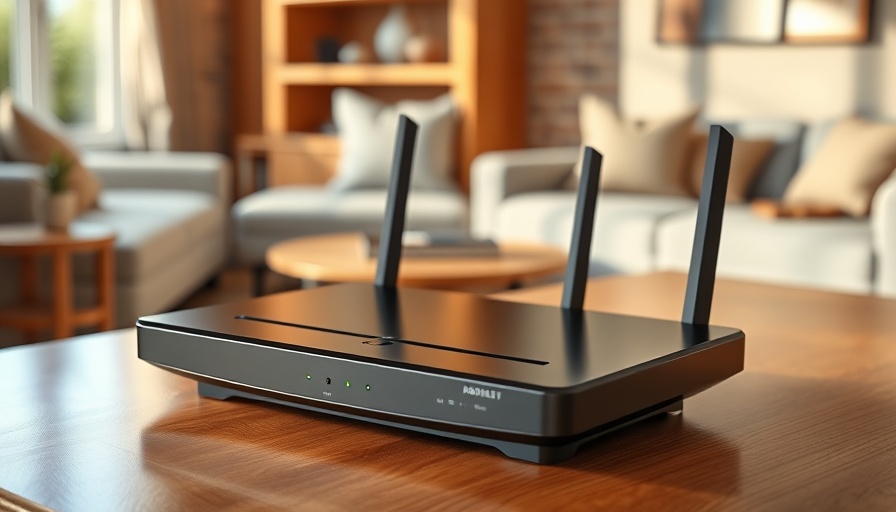
Choosing Connectivity: The Ethernet Backbone of the Home Office
As we step into 2025, the landscape of home offices is transforming, particularly in how we approach our internet connectivity. With an increase in remote work, enhancing our digital infrastructure has never been more vital. While traditional Wi-Fi routers have served their purpose in smaller environments, the necessity for reliable, uninterrupted internet connection means that more professionals are opting for mesh systems. Their design inherently supports a wide array of devices and bandwidth-intensive applications that characterize modern remote work.
Practical Performance Insights: Why Mesh Wins Out
The debate between traditional routers and mesh systems boils down to performance—an aspect that cannot be overlooked when your job relies on seamless communication and data transfer. A single router often struggles to maintain performance beyond 2,500 square feet, especially in multi-story homes. However, mesh networks can effectively cover larger spaces, extending to upwards of 5,000 square feet with additional nodes. Imagine being on a critical 4K video conference; you want to avoid any latency that could impact your professionalism. And that's where mesh systems shine, intelligently distributing network traffic.
The Financial Breakdown: Are the Costs Worth It?
Cost is always a consideration for home office setups. Single routers may start at around $100, which is appealing for those on tight budgets. However, when one encounters limitations and requires extenders, the costs can quickly add up, introducing not only financial strain but also the potential for technical hiccups. With mesh systems ranging from $200 to $600, users will often find the ease of setup and the promise of optimal performance far outweighs the initial expense, particularly for those managing multiple connections simultaneously.
Setup Simplified: Your Time is Valuable
In the face of deadlines, nobody wants to grapple with complex setup processes. Here's where mesh networks come into play with their exceptional ease of installation. Instead of spending hours figuring out how to optimize the positioning of one router, mesh systems auto-configure seamlessly. Features like adaptive beamforming direct signals effectively, ensuring uptime. Research from Wirecutter shows that this convenient setup can take under 30 minutes, leaving users free to focus on their work rather than their Wi-Fi.
Enhanced Security: Future-Proof Your Network
As remote work amplifies, security is paramount. Mesh systems generally come equipped with advanced security features like built-in firewalls and automated updates, minimizing vulnerabilities against cyber threats—a crucial point given the rise of online cyberattacks targeting home office setups. By choosing mesh, professionals not only enhance their connectivity but fortify their defenses.
The Conclusion: Why Mesh Systems are the Future, Today
The shift toward mesh networking has profound implications for professionals setting up home offices in 2025 and beyond. The consensus is clear: while traditional routers are great for smaller environments, mesh systems offer expansive coverage, exceptional performance, and enhanced security. For those engaged in hybrid work, ensuring that your network is equipped to handle the demands of modern-day work-life balance is not just a choice—it's a necessity. Adopting mesh technology could mean the difference between a solid professional reputation and a frustrating tech experience. It's time to evaluate your options carefully and make the switch to ensure uninterrupted efficiency.
 Add Row
Add Row  Add
Add 




Write A Comment